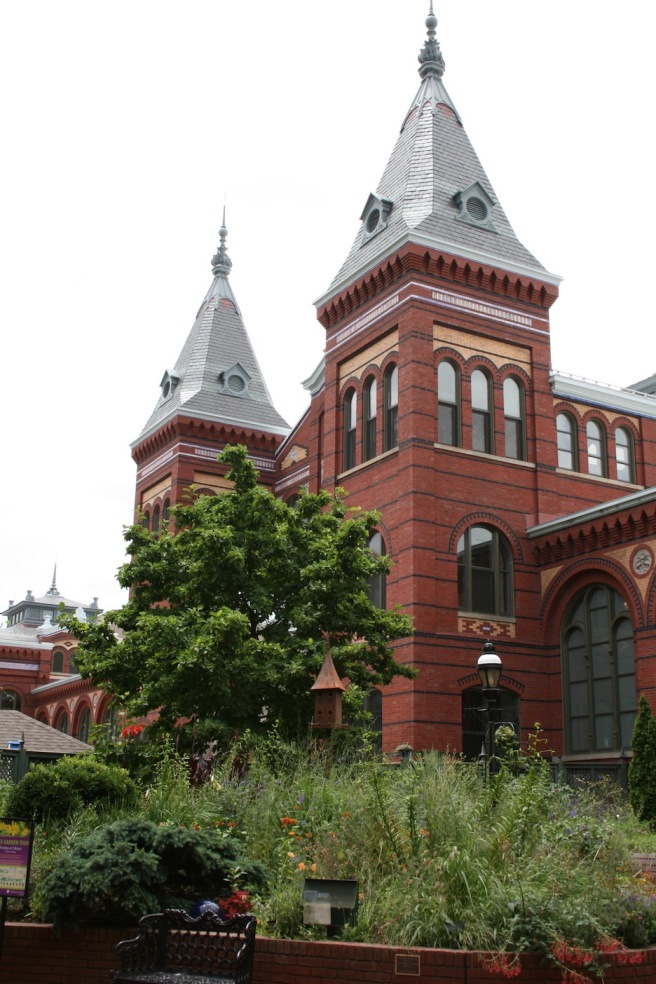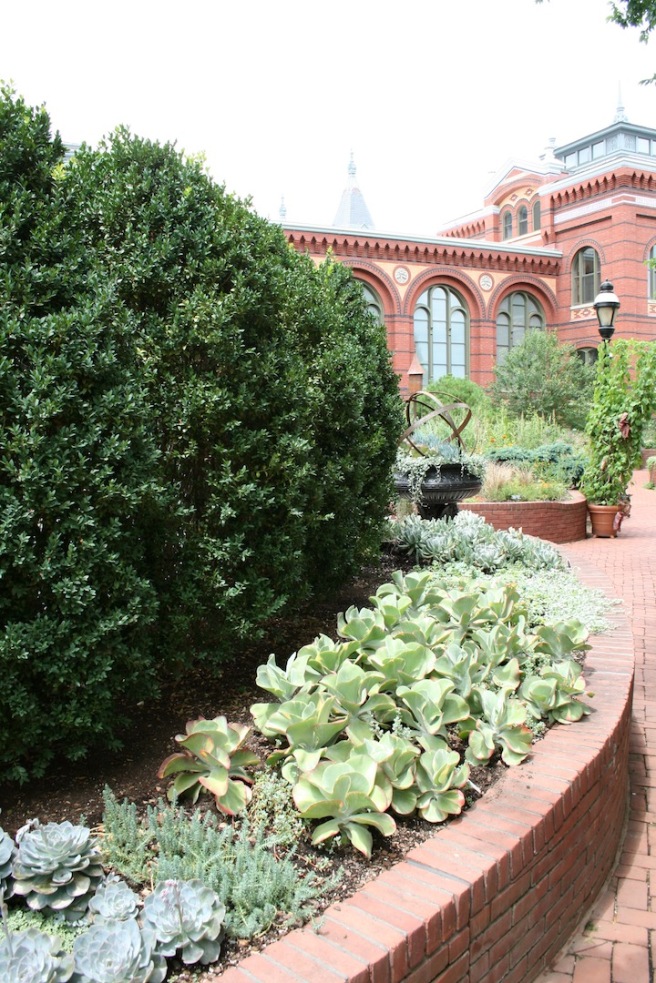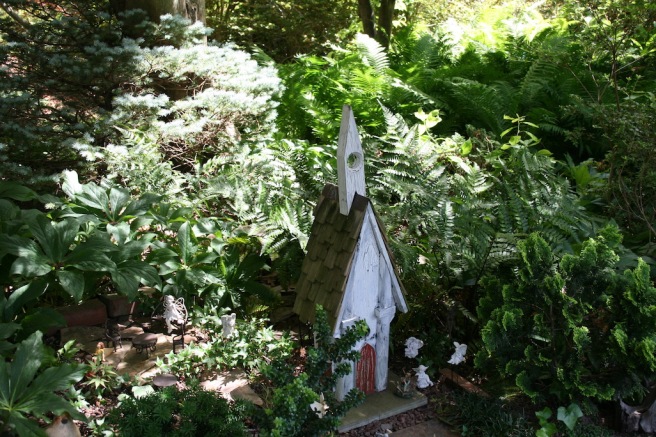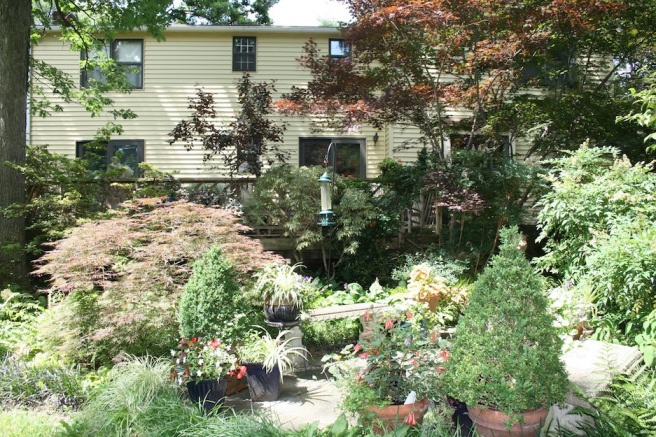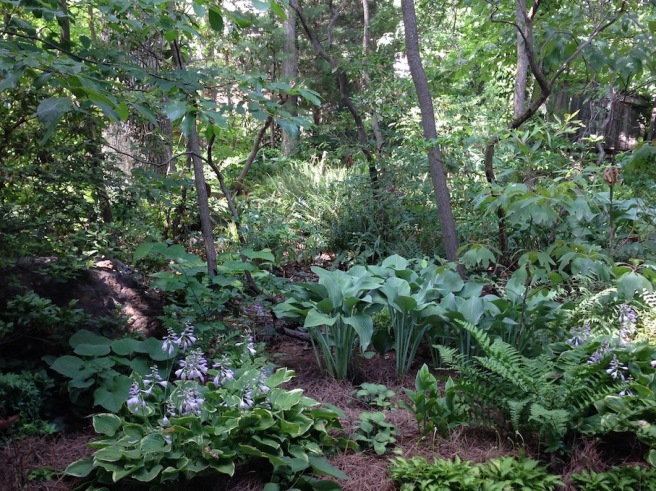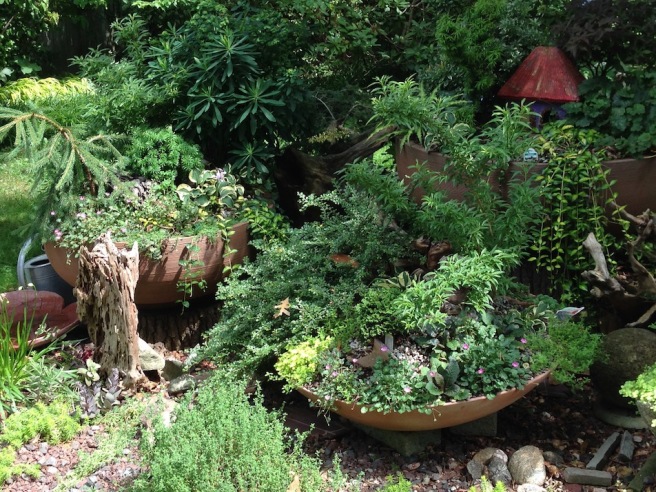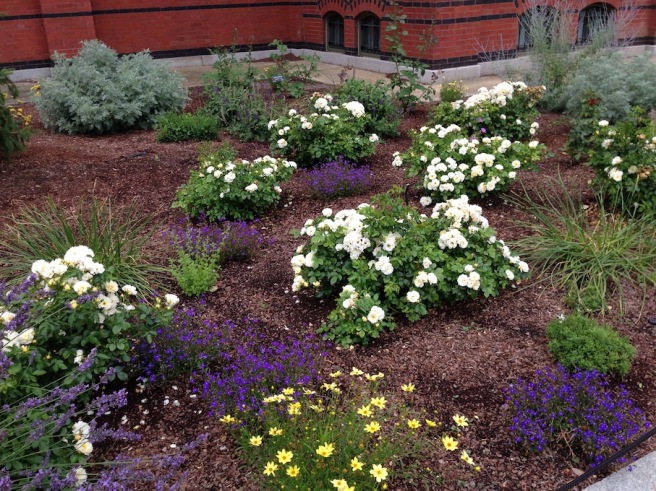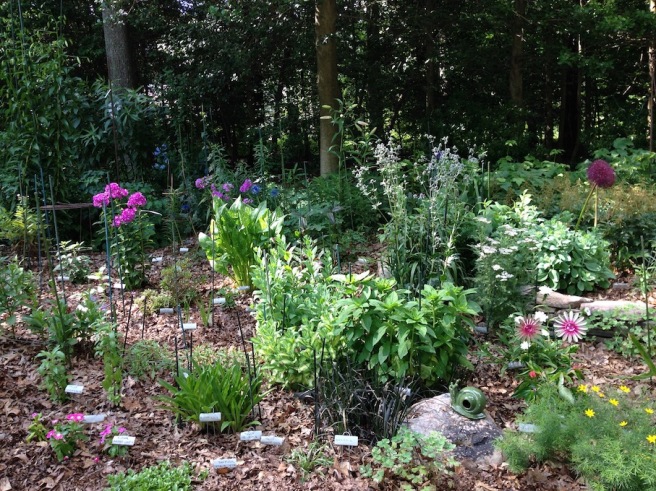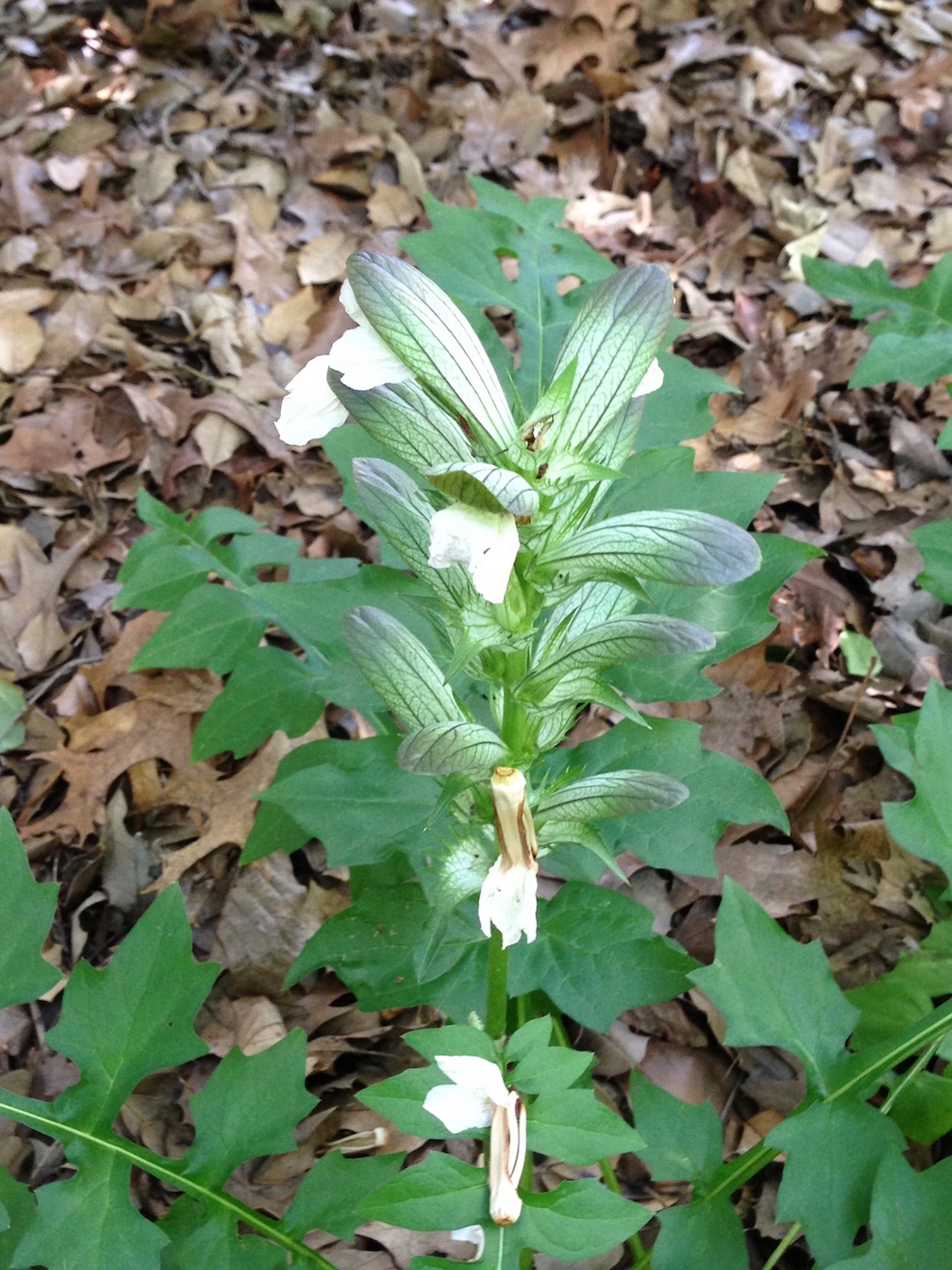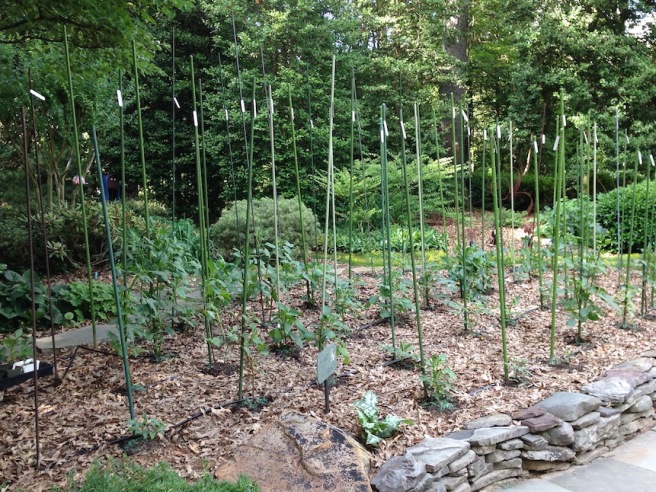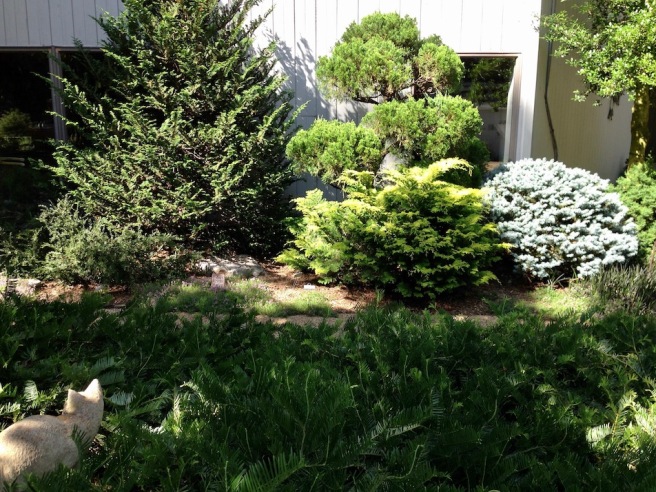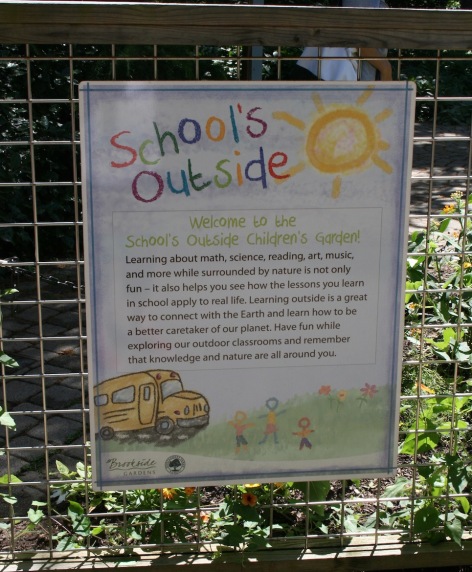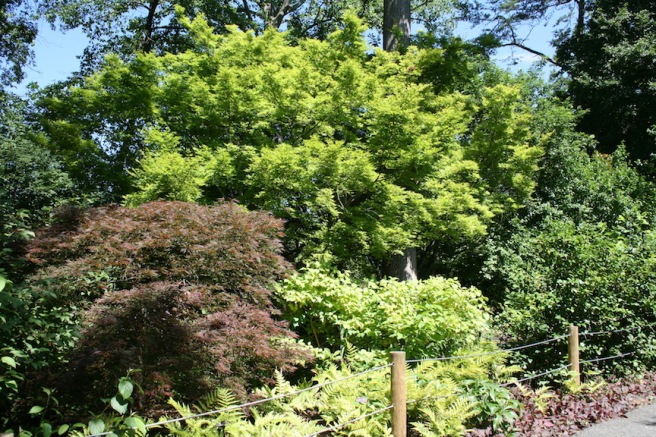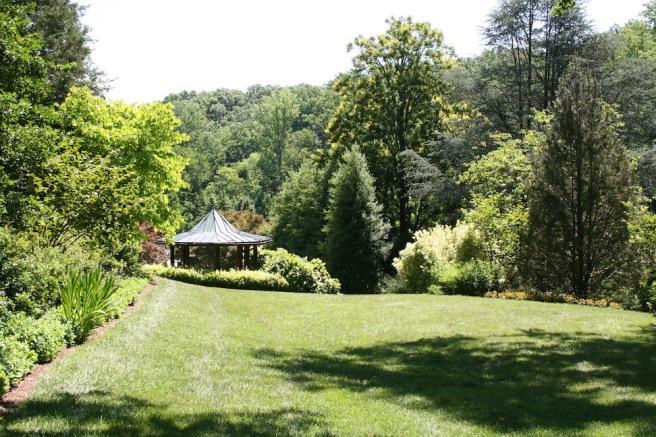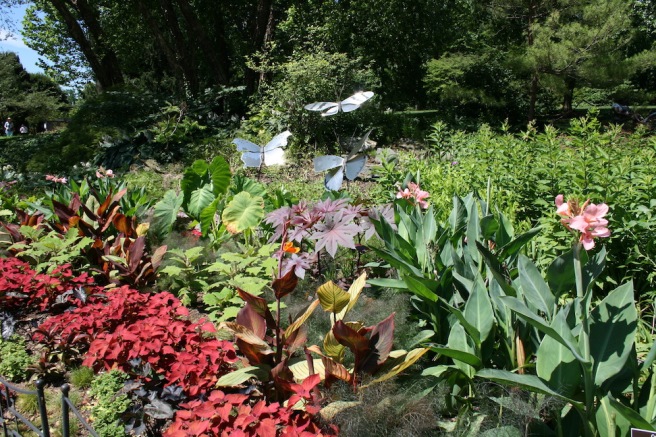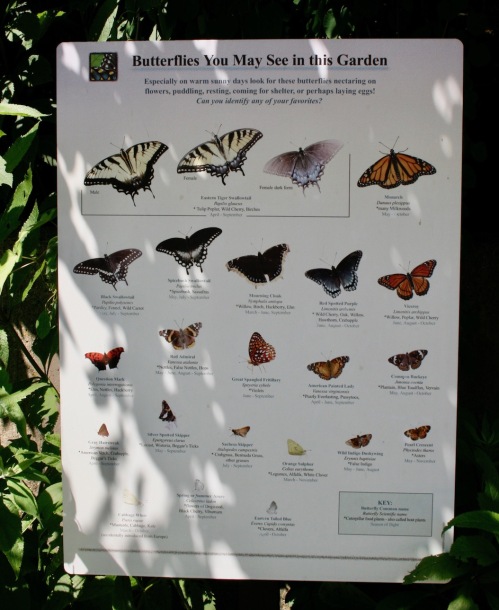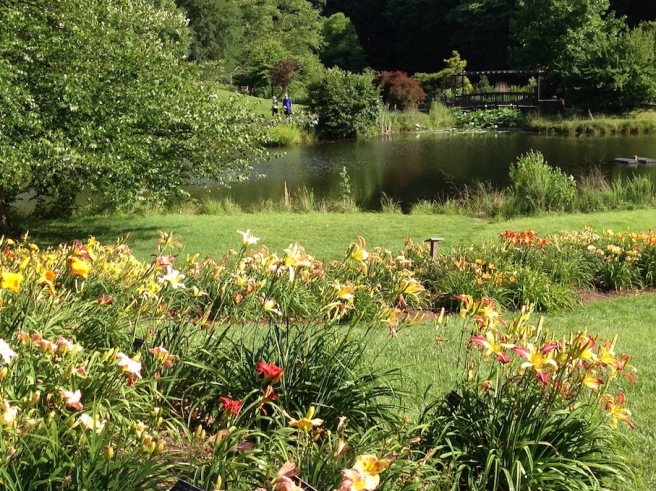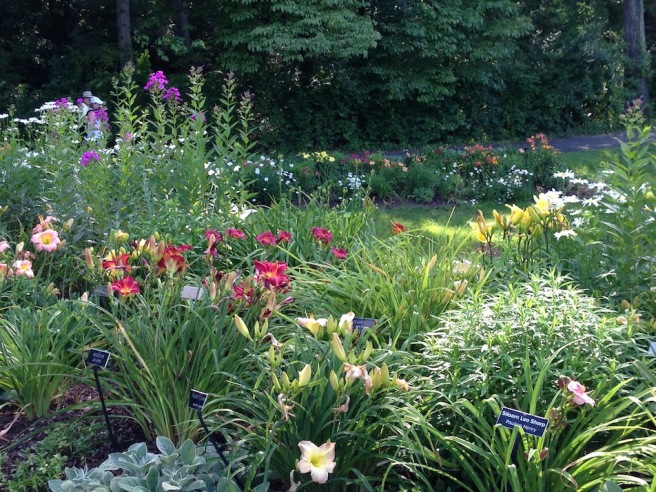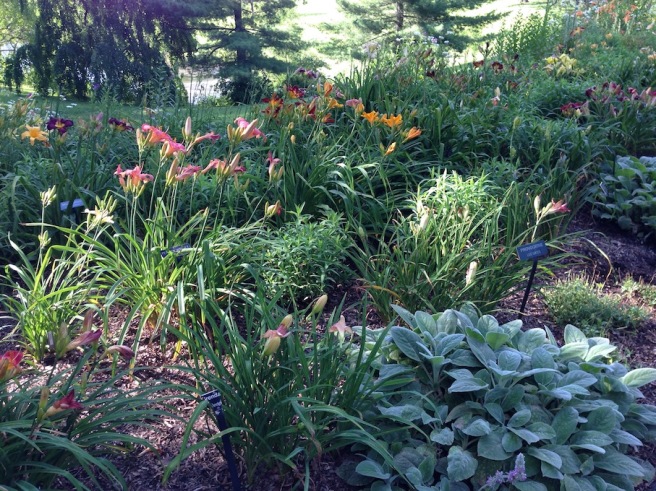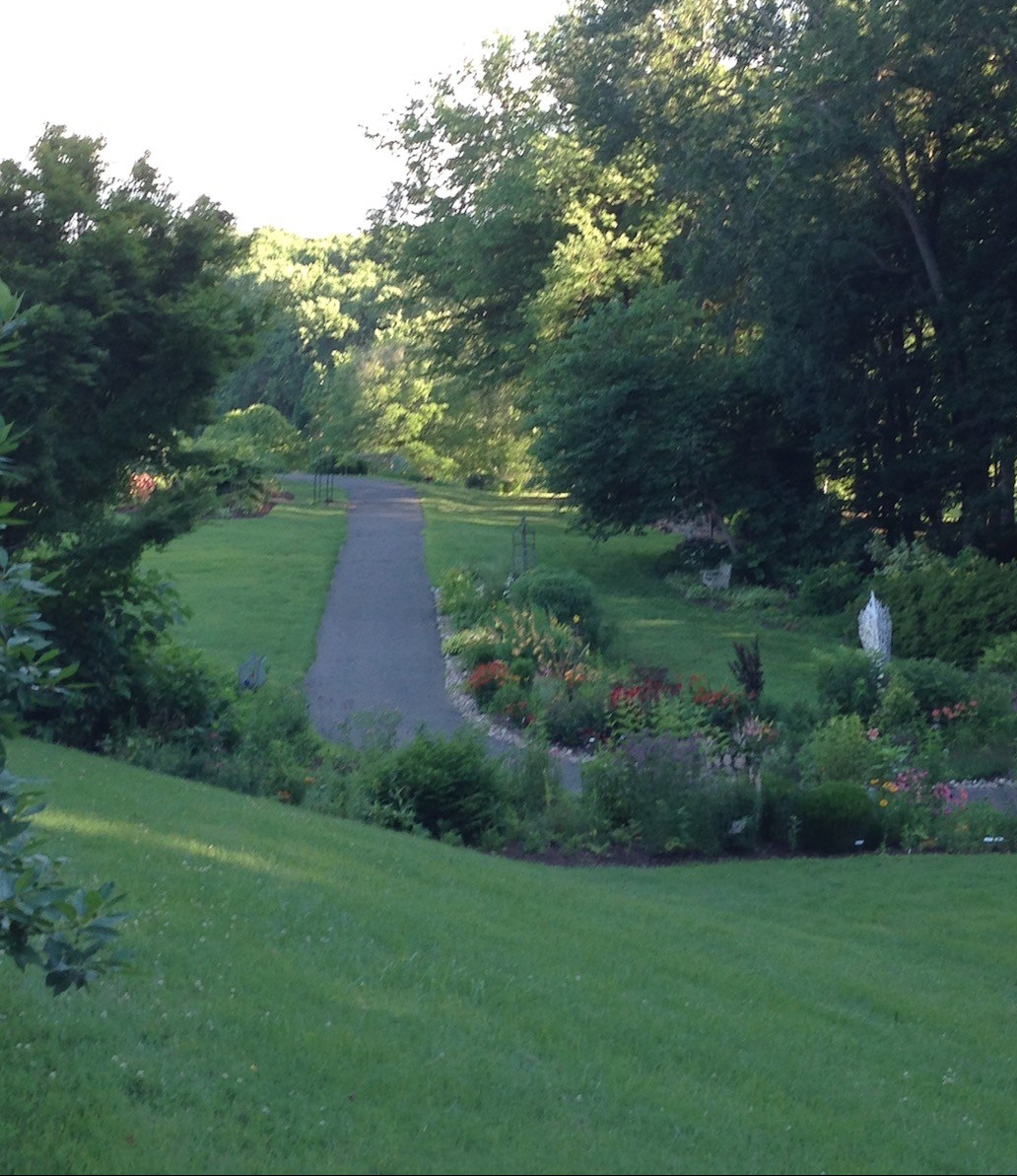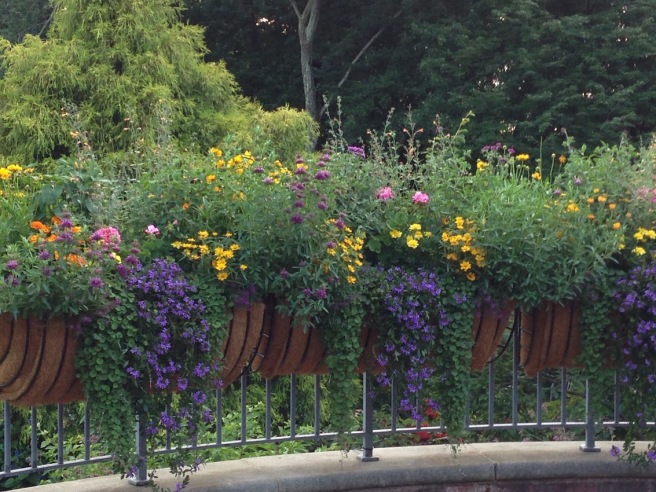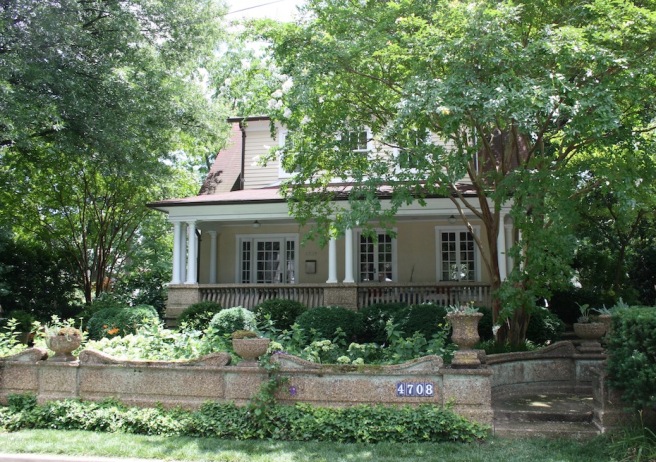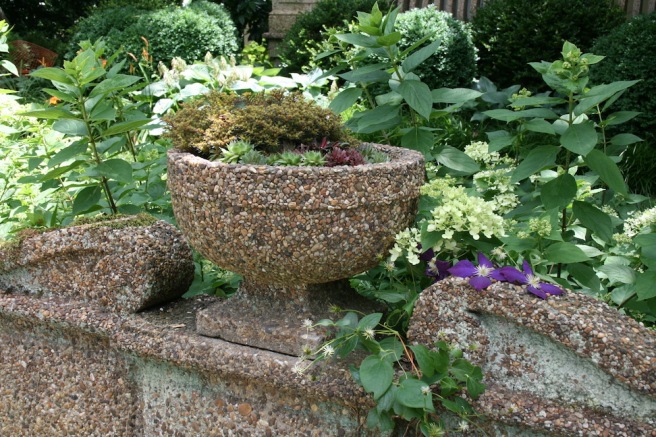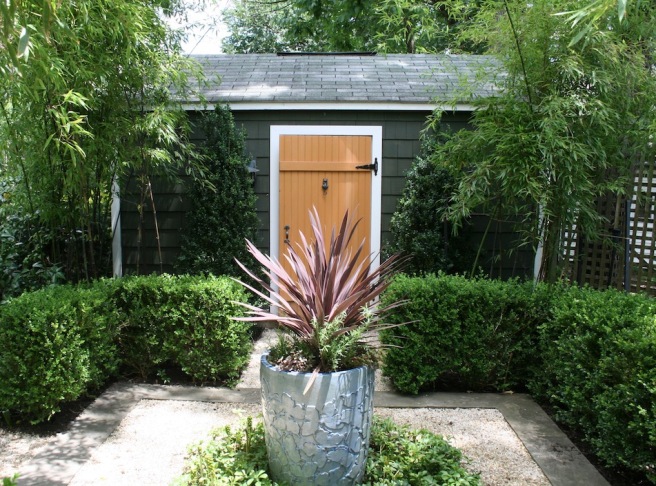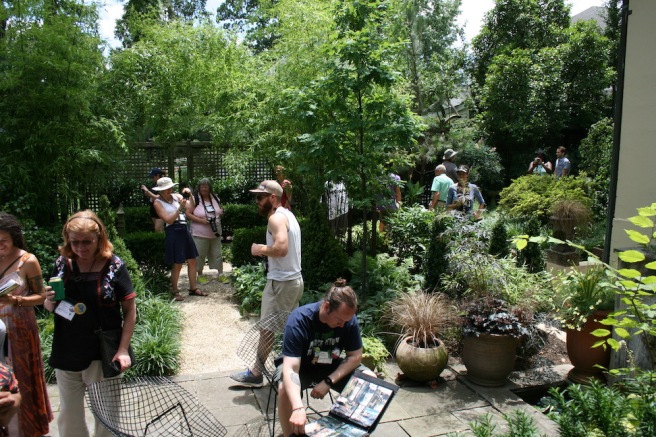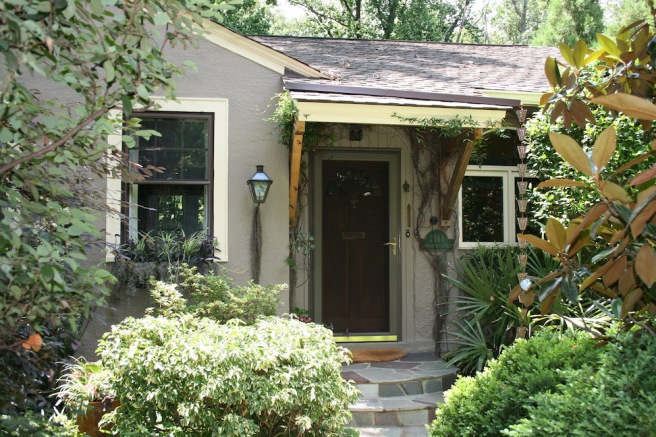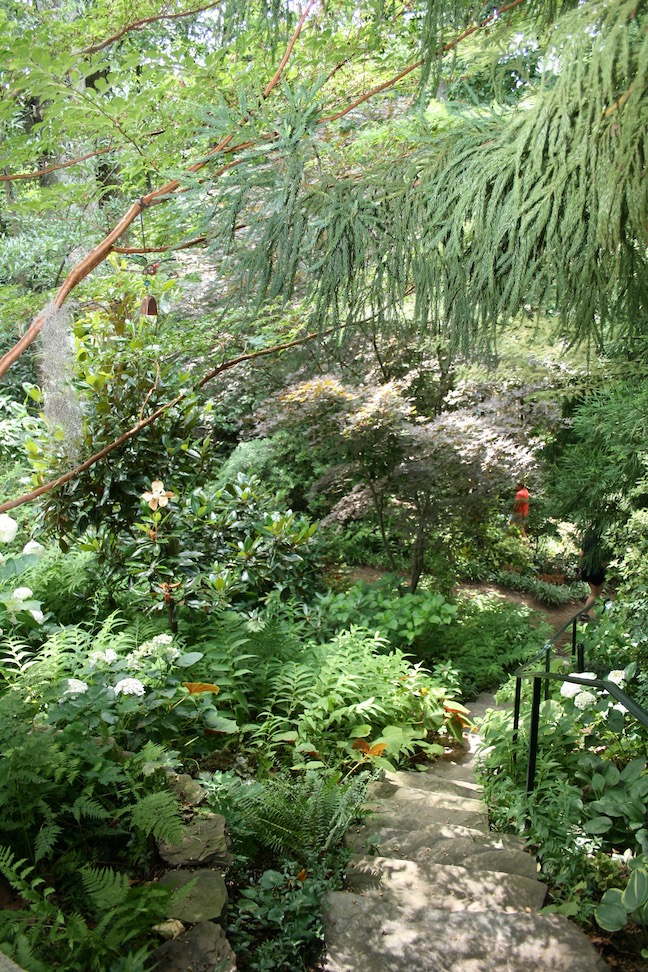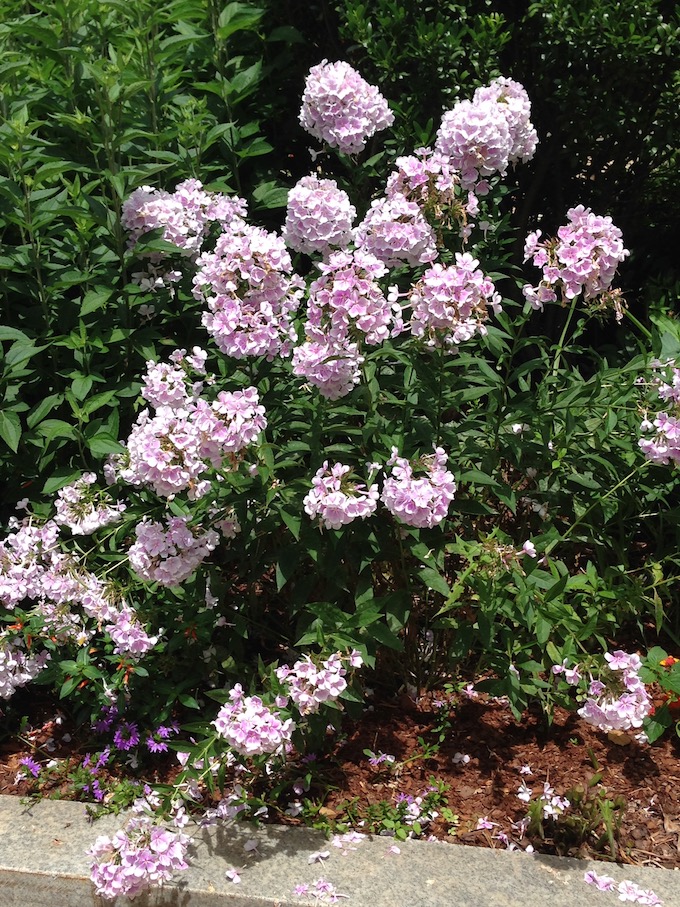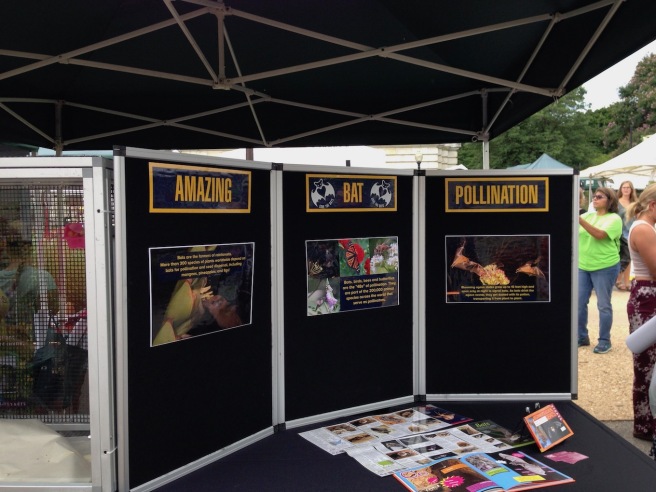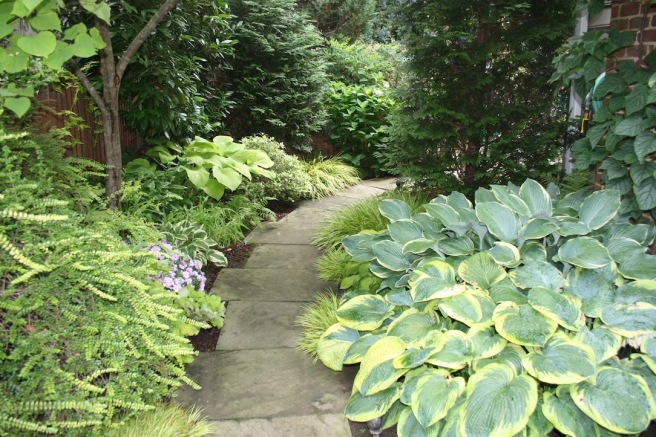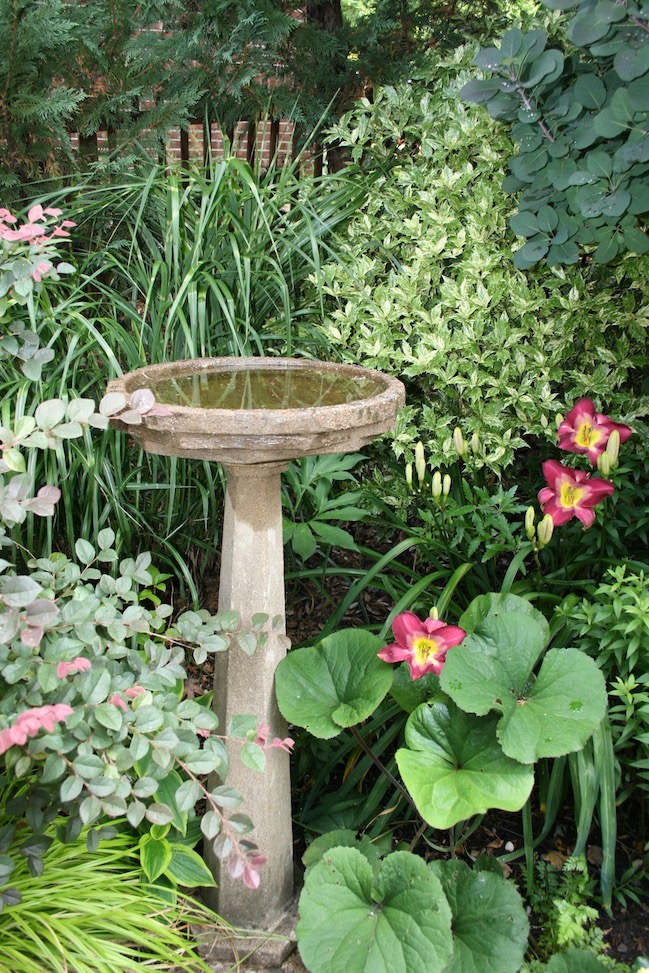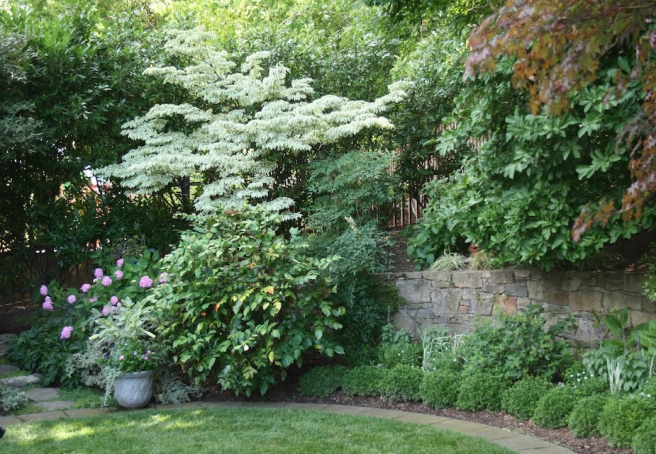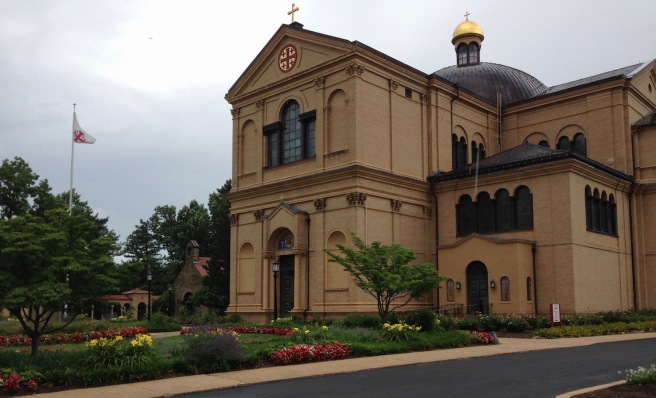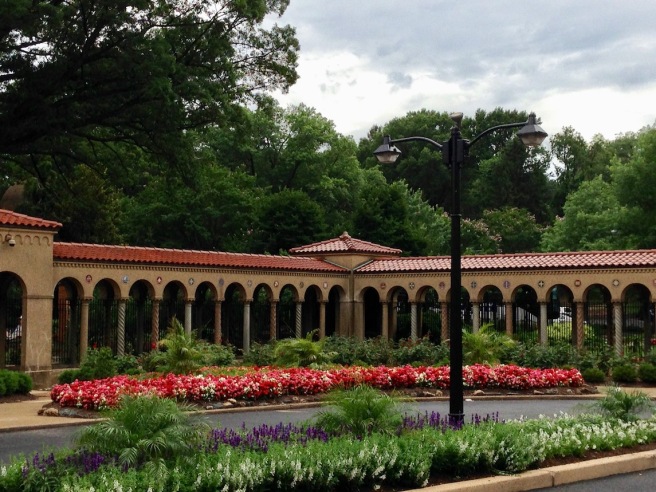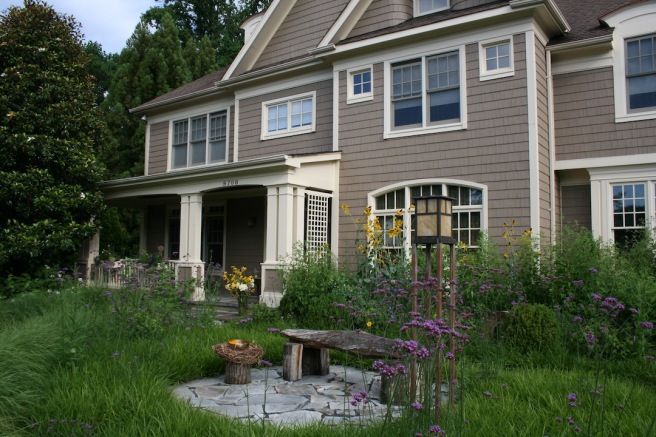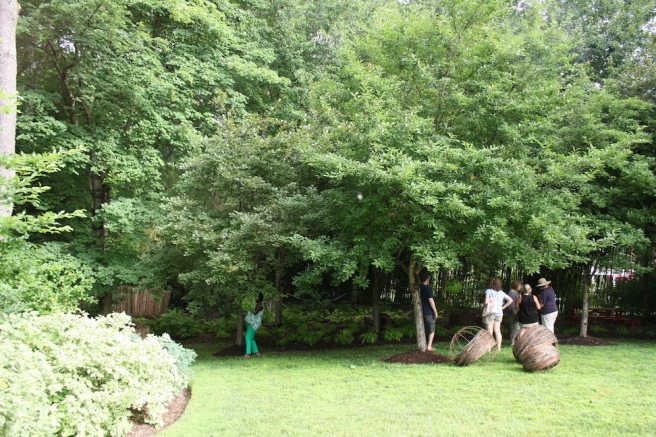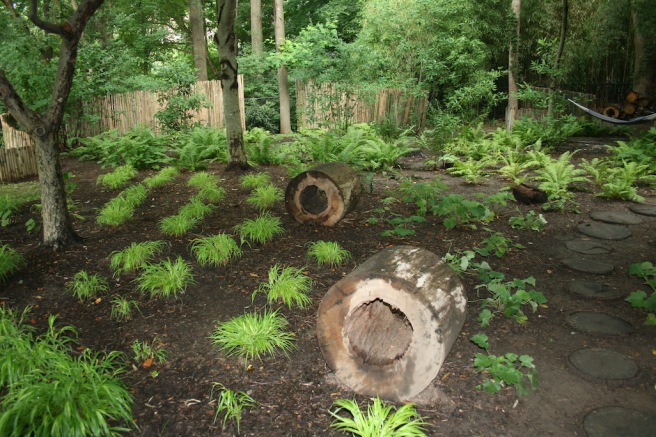 A narrow strip of land between the Smithsonian Arts and Industries Building and the Hirshhorn Museum and Sculpture Garden, once designated in the master plan of the day as a future parking lot, is the site of the Mary Livingston Ripley Garden. Mrs. Livingston, who was the wife of the eighth Secretary of the Smithsonian Institution and the founder of the Women’s Committee of the Smithsonian Associates, was an accomplished plantswoman and envisioned the open space as a “fragrant garden”. In 1978 she persuaded the Women’s Committee to sign on in support of her garden concept and the space became reality in 1988. In the early years of the garden Euonymus was transplanted from her home in Litchfield, Connecticut to form the east wall espaliers. The garden is supported today with funds from another benefactor, Mrs. John C. Folger, who established an endowment in 1994 for the care of the garden with the hope that others would be inspired by her generosity and add to the funds, enabling the garden to be enjoyed by the public well into the future.
A narrow strip of land between the Smithsonian Arts and Industries Building and the Hirshhorn Museum and Sculpture Garden, once designated in the master plan of the day as a future parking lot, is the site of the Mary Livingston Ripley Garden. Mrs. Livingston, who was the wife of the eighth Secretary of the Smithsonian Institution and the founder of the Women’s Committee of the Smithsonian Associates, was an accomplished plantswoman and envisioned the open space as a “fragrant garden”. In 1978 she persuaded the Women’s Committee to sign on in support of her garden concept and the space became reality in 1988. In the early years of the garden Euonymus was transplanted from her home in Litchfield, Connecticut to form the east wall espaliers. The garden is supported today with funds from another benefactor, Mrs. John C. Folger, who established an endowment in 1994 for the care of the garden with the hope that others would be inspired by her generosity and add to the funds, enabling the garden to be enjoyed by the public well into the future.
Washington, D.C. architect Hugh Newell Jacobsen set the stage for a still evolving collection of perennials, annuals and tropicals with his curvilinear brick walkway flanked by serpentine raised beds. His use of red brick echoes the surrounding buildings and grounds the long narrow garden.


As you enter from the National Mall end of the Ripley Garden an airy courtyard, anchored by a large fountain, offers spots to sit in both sun and shade. As with all of the Smithsonian Gardens I visited, year round structure takes the form of groups of conifers and evergreen trees and shrubs. Current horticulturalist Janet Draper states her goal for the Ripley Garden is to expose visitors to as many different plants as possible and to “expand the plant palette.” With over 200 plant varieties represented, meticulously labeled and beautifully maintained she has certainly painted a garden picture which is both beautiful and educational.

Hydrangea quercifolia ‘Alice’ reaches to the sky. Heuchera ‘Autumn Bride’, Acanthus mollis and Saxifragia stolonifera nestle at her feet.

Cistus x hybridus ‘McGuire’s Gold’ is a shining light in this plant grouping. I am going to check this one out for my garden! I love how this shrub acts as a prop for some very tall lilies planted behind it.

Here’s a great view of the winding chevron brick walkway which runs the entire length of the garden from the National Mall to Independence Avenue. What you can’t get a sense of is the undulation of the raised beds. At some points they are only a couple of bricks high as in this photo. At others they are raised waist high—they flow up and down so seamlessly it took me several looks to focus on the height difference.

There are blues and whites…

Chartreuses and limes…that’s Jasminum officinalis ‘Frojas’, common name Fiona sunrise jasmine on the far right.

Reds and grays–love the pop from these Caladium!

Really nicely done living wall. Smithsonian Gardens greenhouse staff design and execute all the hanging baskets and containers feature in the Ripley Garden. They also propagate the annuals and care for the tropicals and succulents out of season.

 This interesting vine was new to me. Cissus discolor or rex begonia vine is being supported almost invisibly by a panel of fine chicken wire. A little research revealed that this species is a tropical and would generally be used as a houseplant in a cold winter area like Virginia. A great example of Janet’s goal to expose visitors to new and interesting plant material, in this case in non-traditional setting.
This interesting vine was new to me. Cissus discolor or rex begonia vine is being supported almost invisibly by a panel of fine chicken wire. A little research revealed that this species is a tropical and would generally be used as a houseplant in a cold winter area like Virginia. A great example of Janet’s goal to expose visitors to new and interesting plant material, in this case in non-traditional setting.

I have been seeing these ‘bug houses’ on Pinterest for awhile now but this is the only large one I have seen in person. Not willing to miss a teaching opportunity, this great sign gives garden visitors a heads up!

Hands down, the Mary Livingston Ripley Garden was my favorite of the 6 Smithsonian Gardens I saw. The original design of the curvy raised beds and brick walkways established a framework of open spaces to which structural and foundation plantings were added. Now mature, those plantings provide year round interest and a backdrop to showcase free flowing colonies of perennials, bulbs and their annual companions. This garden appealed to me as a plant collector and I am sure on every visit I would be able to see something either new to me or used in an inspiring grouping. The time and effort needed to maintain large expanses of turf or manicure bed-turf transitions can all be redirected toward creating interesting combinations of colors, textures and shapes in living plant tableaux.
Kuddos to Mrs. Livingston for pursuing her dream and creating this paradise which so easily could have become another parking lot.

